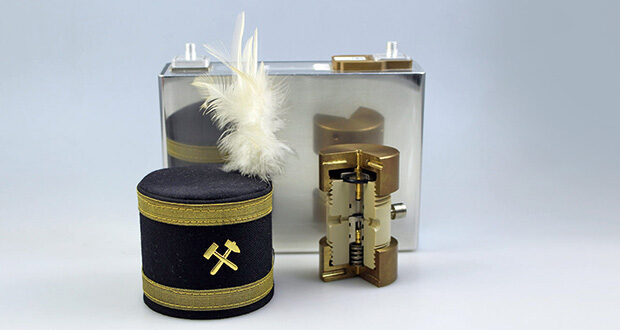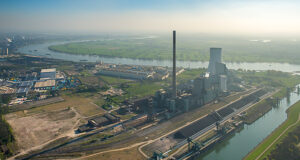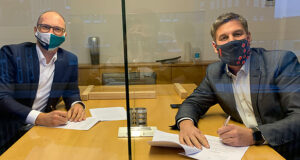What connects coal mining and electric mobility? One has been a thing of the past in Germany since the end of 2018, the other is a future technology. Lithium connects the past and the future (Figure 1). The mine water from the former mining tunnels contains this valuable raw material, which is required for manufacturing lithium-ion batteries. How lithium can be extracted from mining water is the subject of the MERLIN research project (MERLIN: Mining Water Lithium Extraction) of Prof. Volker Presser at the Leibniz Institute for New Materials (INM) in Saarbrücken/Germany. The RAG-Stiftung, Essen/Germany, supports the research project, which started in November 2020 and is planned for two years, with 300,000 €. Bärbel Bergerhoff-Wodopia, Member of the Board of Executives at the RAG-Stiftung: “Mine water management is a key component of the permanent tasks of post-mining, whose financing is the purpose of the RAG-Stiftung. Researching the opportunities that involve mine water convinced us. This is why we are happy to support this project.”
In the former coal mining districts in the Ruhr and Saar areas, rainwater and surface water penetrate hundreds of metres of massive rock formations before collecting in the old tunnels and finally emerging as mine water. When the water passes through the layers of rock some rare minerals accumulate in the water such as sodium, potassium or calcium, but also elements such as strontium, barium or lithium which are very attractive for industry. “Our approach is to understand mine water as a perpetual opportunity and to make it usable as valuable water through innovative technology”, states Prof. Presser, describing the objective of the project. Approximately 1,900 t/a of valuable lithium is lost in Germany, which flows off with the mine water unused, e. g., via rivers such as the Blies and Saar.
Lithium plays an important role in the energy revolution and has become a key industrial and strategic element for electric mobility – especially for the industrial location of Germany with its major automotive industry. Billions of euros are invested in the development of new electric vehicle concepts. As the lithium reserves in Europe are only 1 to 2 % of global production and the demand is significantly higher, the expensive metal must be imported, e. g., from Chile and Argentina, among other places, where it is extracted under conditions that endanger the environment and are hazardous to health.
The success of electric mobility is therefore closely linked to the exploitation of new resources and the development of innovative technologies for lithium extraction. The MERLIN project is based on ion-sensitive electrochemistry, which Prof. Presser has already been researching for several years and successfully using for desalination, e. g. In the MERLIN process mine water initially flows through a special structure, the MERLIN cell, which contains two electrodes with different polarity. Lithium and chlorine ions are attracted by an electrode, while all other dissolved substances leave the cell with the mine water. Then fresh water flows into the cell and collects lithium and chlorine in the form of lithium chloride. The process is repeated several times so that the concentration of the lithium chloride in the water continues to increase. After the residual water has evaporated it finally appears as a solid. As the electric charge is almost fully recovered during discharging, the MERLIN process is an energy-efficient process.
The project contains various work packages over the 24-month term. They range from the analysis of mine water, particularly the water from the former Saarland mines in Reden and Camphausen, to the optimisation of the electrode material in the MERLIN cell through to the development of a demonstrator and a final profitability analysis. The INM Innovation Centre provides assistance to Prof. Presser with the implementation of the project. Karsten Moh, Head of the INM Innovation Centre, says: “The project is an ideal link between the cutting-edge research at the INM and the technology transfer of the Innovation Centre. We will actively support the project with staff and infrastructure. For this, we will research the upscaling of the technology and look at the overall process.”
MERLIN is also supported by the Saarland State Chancellery, who actively supported the application for funding by the RAG-Stiftung from the submission of the application through to the approval. (RAG-Stiftung/Si.)


